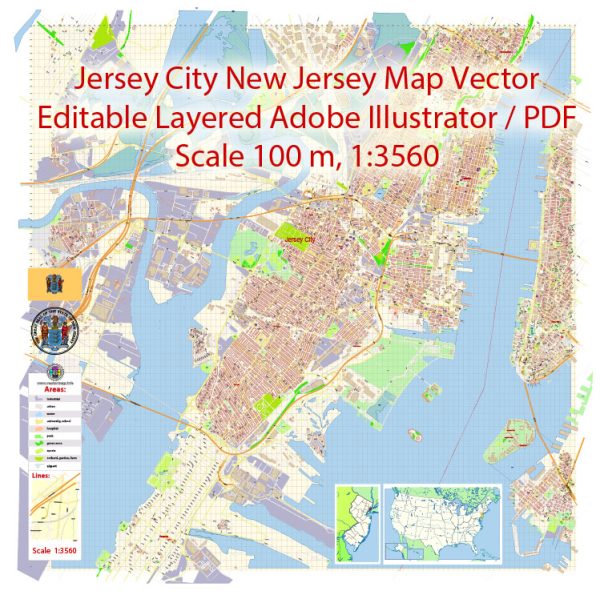Jersey City, New Jersey, like many cities in the United States, has a diverse energy system that includes various sources of energy generation, distribution, and consumption. Here’s an overview of the energy system in Jersey City:
- Electricity Generation: Jersey City primarily relies on the regional electric grid for its electricity supply. This grid is operated by PJM Interconnection, a large regional transmission organization that manages the flow of electricity across the mid-Atlantic and parts of the Midwest. The electricity generated in this region comes from a mix of sources, including natural gas, coal, nuclear, renewables, and imported electricity.
- Renewable Energy: Jersey City has made efforts to increase its use of renewable energy sources. This includes solar and wind energy. Many residential and commercial buildings have installed solar panels, and there are also off-site renewable energy projects that contribute to the city’s clean energy goals.
- Natural Gas: Natural gas is a significant source of energy in Jersey City, used for heating, electricity generation, and industrial processes. It is a relatively cleaner-burning fossil fuel compared to coal or oil.
- Oil and Propane: Some homes and businesses in Jersey City use oil or propane for heating and energy. However, these sources are becoming less common due to their environmental impact.
- Energy Efficiency Programs: Jersey City has implemented energy efficiency programs to reduce energy consumption in residential, commercial, and industrial buildings. These programs often include incentives for energy-efficient appliances, insulation, and lighting.
- Transportation: The transportation sector is a significant consumer of energy in Jersey City. The city has been working on improving public transportation options, promoting the use of electric vehicles, and developing bike lanes and pedestrian-friendly infrastructure to reduce reliance on gasoline and diesel fuels.
- Waste-to-Energy: Some cities have waste-to-energy facilities that convert municipal solid waste into electricity. Jersey City may have waste-to-energy facilities in the region to manage waste and generate energy.
- Regulations and Policies: Jersey City, like the rest of New Jersey, is subject to state and federal energy regulations and policies that impact its energy sources, efficiency programs, and environmental goals.
- Environmental Initiatives: Jersey City has taken steps to reduce its carbon footprint and combat climate change. This includes joining initiatives to reduce greenhouse gas emissions and increase the use of clean and renewable energy sources.
- Resilience Planning: Given its location along the coast, Jersey City has likely been involved in resilience planning to prepare for extreme weather events and natural disasters, which can impact energy infrastructure.
It’s important to note that the energy landscape can change over time as cities and regions transition to cleaner and more sustainable energy sources. Jersey City, like many urban areas, is likely to be making efforts to reduce its carbon footprint and increase its use of renewable energy in line with broader national and global sustainability goals. For the most up-to-date information on Jersey City’s energy system, you may want to consult local government resources and energy providers operating in the area.


 Author: Kirill Shrayber, Ph.D.
Author: Kirill Shrayber, Ph.D.